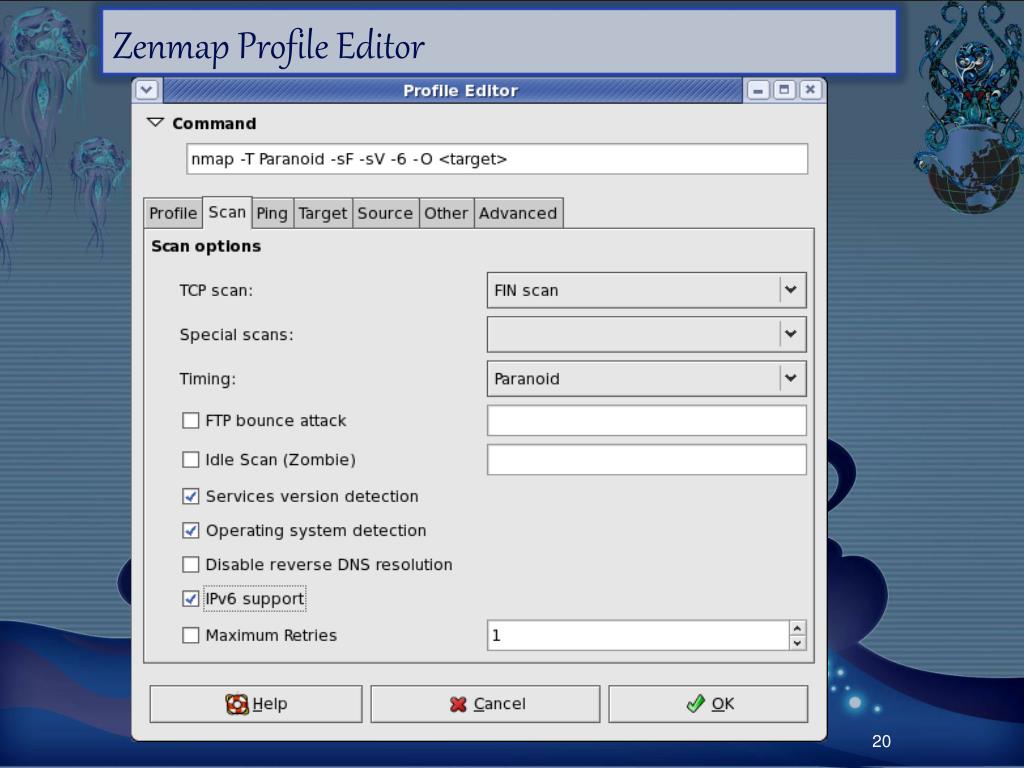

On clicking a host, it becomes the new center and when a new scan is launched every new host and network path will be added to the topology automatically. Hosts are represented as Nodes on interface and we can use controls to zoom in and zoom out. Zenmap’s “Topology” option provides an interactive, animated visualization of hosts connectivity. Zenmap analyses and displays the complete details related to hosts such as OS version, installed services, services status and uptime etc Zenmap installation on Debian, Ubuntu, and Linux Mint
#DIFFERENCE BETWEEN NMAP AND ZENMAP FULL#

Results of multiple scans can be combined together for review and it has the ability to show the difference between two scans and identify what has changed from previous scan to now on hosts and help to easily track new hosts or services appearing on networks and disappearing services. It arranges its display to show all ports on a host or all hosts running a specific service. Zenmap lets you create a topology map of discovered networks. It is a cross platform application available for Linux, Windows, and OS X. Results of scans can be saved to review later and can be compared with one another (results of scans are stored in a database). It has a command creator which lets interactive creation of Nmap command lines. It has advanced features for experienced users.
#DIFFERENCE BETWEEN NMAP AND ZENMAP FREE#
It is a multi-platform, free and open source application which gives users a friendly interface. I have worked in organisations where the SSH service of VMs is only present via a control network too).Zenmap is an official NmapSecurity scanner GUI (graphical user interface).

It is a multi-platform, free open source application that provides users with an easy-to-use graphical. normal users cannot reach those services, they can only be reached by a VPN and/or a control room. Zenmap is the official Nmap Security Scanner GUI. For instance in firewalls/switching equipment, we define interfaces/VLANs on a specific control network that users cannot reach for having the web management/ssh services active, and only on those interfaces. TLDR It is not a rule that scanning different IP addresses of the same equipment, that all the scanning data/open ports will be the same.Īlas, by network design most often than not, we do not want them to be the same. PS A very old adage that I was taught when as a trainee, was: "More important than using the tools, is understanding how they work/the data we are given."Ĭoncerning answer, as an example mentioned on this answer, the default port of a widely used DB, mongodb, is not on the list of ports scanned by default by nmap. On your specific 192.168.0.142 case, I would enquire wether that MySQL could not also be bound to 127.0.0.1. Such is the case usually, for security reasons, of binding to 127.0.0.1, MySQL, postgresql and mongo DBs for only localhost use, redis and others.Ĭonversely, you can find sometimes other ports on non-localhost IPs, especially when you have vhosts in webservers bound to non-localhost IP addresses, and to only listen on those addresses. If you have services that are only bound to the localhost/127.0.0.1 address, they will only show in a 127.0.0.1 nmap scan, and not in others scans to IP addresses on the same host. Nmap done: 1 IP address (1 host up) scanned in 0.16 seconds Other addresses for localhost (not scanned):

Nmap scan report for localhost (127.0.0.1) Nmap done: 1 IP address (1 host up) scanned in 0.97 secondsĪre those services shown below but not above exactly those that are closed to the outside but open within my local machine?Īre the services whose security that I should worry about exactly those listed above? The following IP address is for my network interface $ nmap 192.168.0.142


 0 kommentar(er)
0 kommentar(er)
